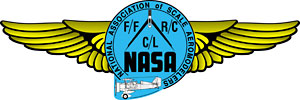By: Tom Noser
If you are going to do scale aileron, elevator or rudder hinges, you are going to have to move the hinge line back from the leading edge of the control surface. “So, tell me something I don’t know” you say. Well sure you know that, but what do you use to handle the cantilever problem? (You know, there’s a gap between the support structure and the hinge point, and the beam spanning that gap is called a cantilever). Well I’ve been using metal tubing to do the job and I haven’t seen anybody else doing that. That’s probably because I haven’t been to enough scale contests and talked to enough builders, or maybe it’s because these guys are just being cagey, but here’s a method I’ve been using for about eight years. The first time I used this system I was building a Piper Tri-Pacer which uses Friese ailerons, and the cantilever in that case is severe as you can see in Figure 1.

I use 0.032″ annealed aluminum for the bracket. The same bracket is used for the hinges without the operator and serves the flap as well as the aileron. This type aileron was used on the P-47 and many other WW II aircraft. The aileron is built using a bulkhead just aft of the hinge line. Backing plates are cemented to the back of the bulkhead to provide a means of mounting the brackets. You can see that this aileron can be easily balanced by cutting a saw kerf into the nose and gluing in a strip of solder. Zero gap hinges shown in Figure 2 are more common. The hinge line is more properly located further to the rear so that the surface can be more easily balanced. (See Figure 4)
The leading edge is made by cutting a 1/8″ saw kerf in the back of the leading edge block and then tapering the block as required. Two sheeting kerfs are then cut into the edges. Cut transverse slots for the ribs and round the block to a half round shape. The hinge beams can now be located and the slots cut to allow free movement through about 30 degrees. Glue the hinge beams into the leading edge and put the top sheathing and all the ribs in place. You are going to need a solid block between two of the ribs to accommodate the operator shown in Figure 3.

To make accurate “Z” bends I drilled a 3/32″ dia hole 1/8″ below the top in one inside face of my vice. Bend a 1/8″ leg on the end of a 1/16″ or 2-56 rod using the vice and a hammer. Put the leg in the hole in the jaw face of the vice and close down on the rod. Hammer a bend in the direction opposite the first leg and remove the rod from the vice. I think you will like the result.

Figure 3 is definitely for serious builders. It will deliver all the torque your servo puts out without friction losses or slop. When used in conjunction with the hinge shown in Figure 2, the control surface is easily removed for painting or maintenance and, best of all, you’ve gotten rid of the turbulence and unsightliness of the outside operators. The zero gap surface still needs a cloth seal between the surface and the rear spar as is done on prototype aircraft to eliminate airflow between the top and bottom of the wing, but I think that balancing the surface about the hinge line will eliminate flutter problems.

Figure 4 illustrates the aileron and elevator hinge for a Cessna 310. The 20% hinge line gets the aileron balanced with a minimum of additional weight in the leading edge. Note that the operator in Figure 3 is not pinned to the aileron. It is free to slide in the telescoping tubing. Also, the 2-56 screw is tapped through the block and the 1/8″ square tube. The bracket in Fig. 1 can be replaced by a piece of 1/16″ plywood, which is glued to an aileron rib. The hardwood block is slotted with a 1/8″ saw kerf 1/8″ deep and glued to a plywood plate.
